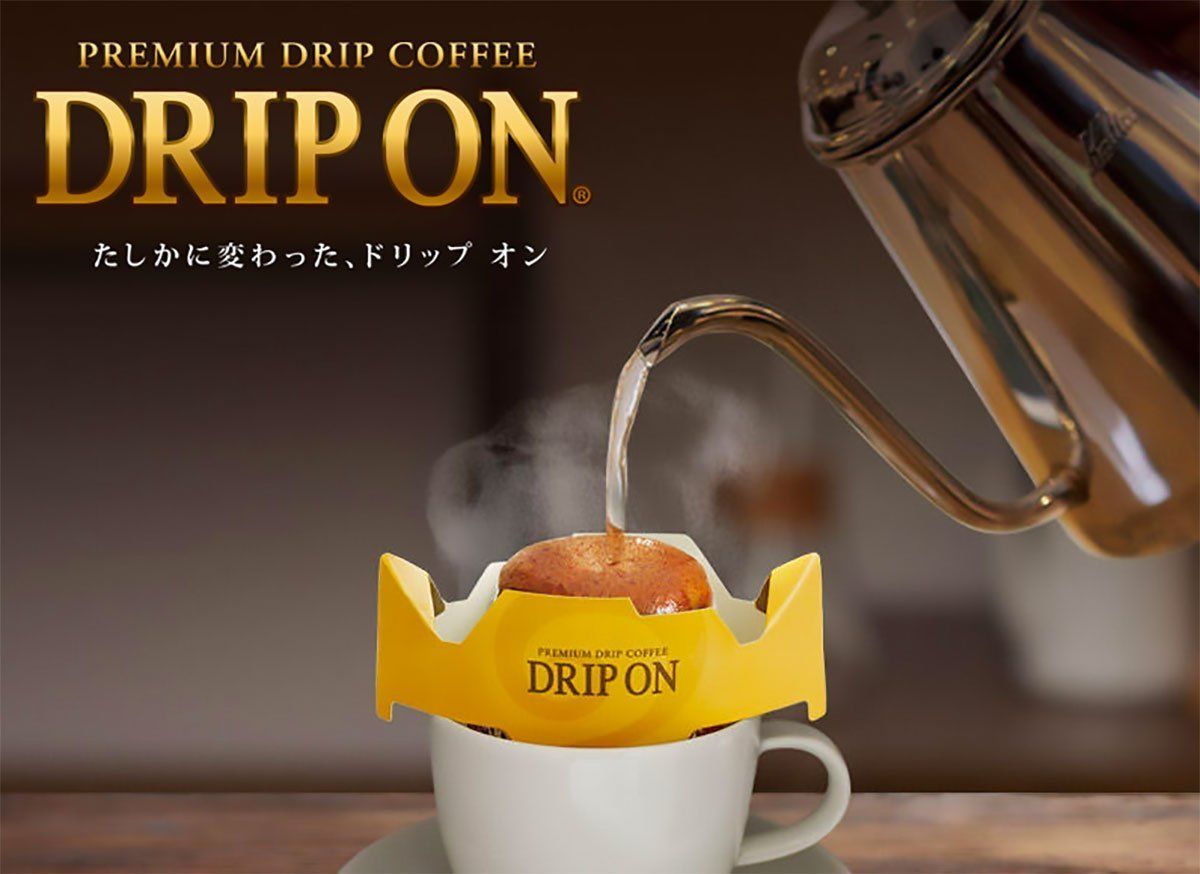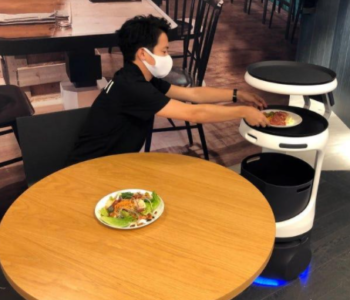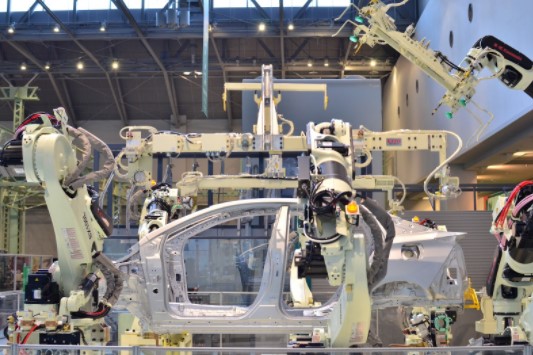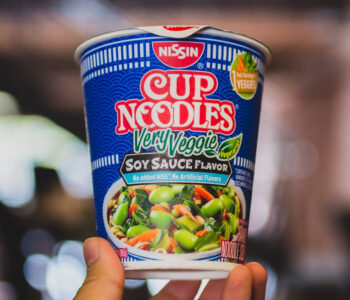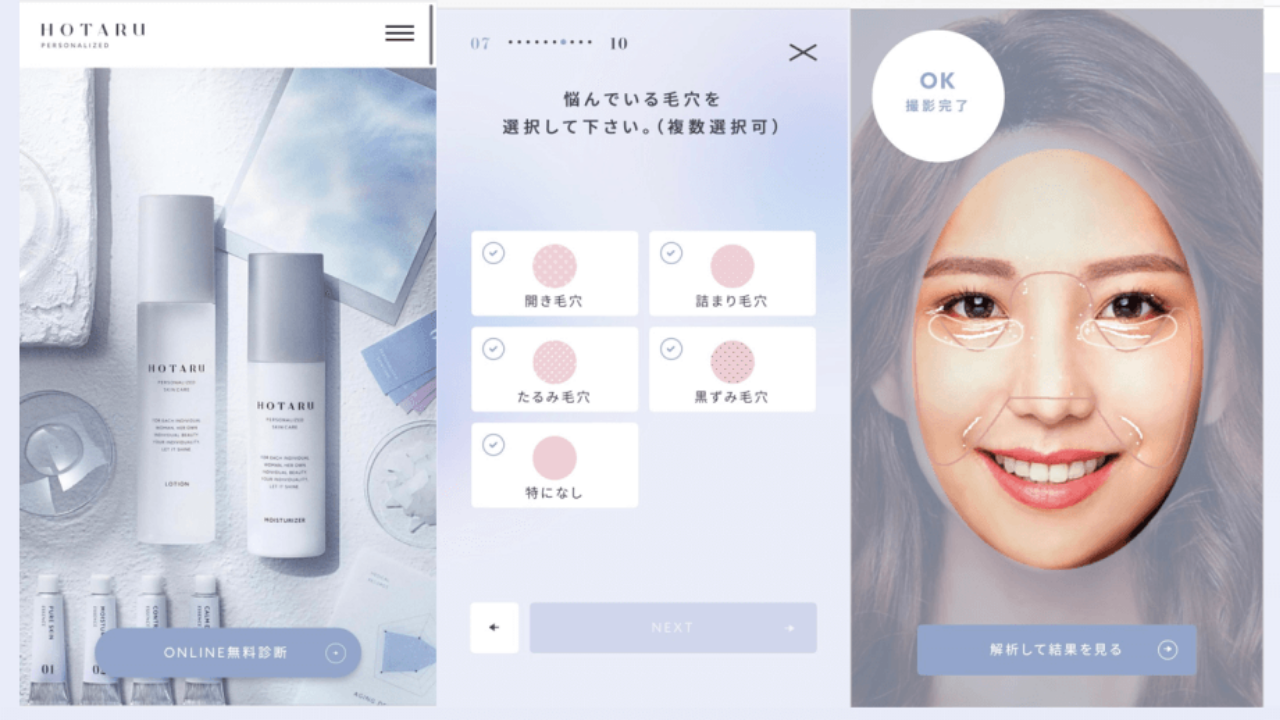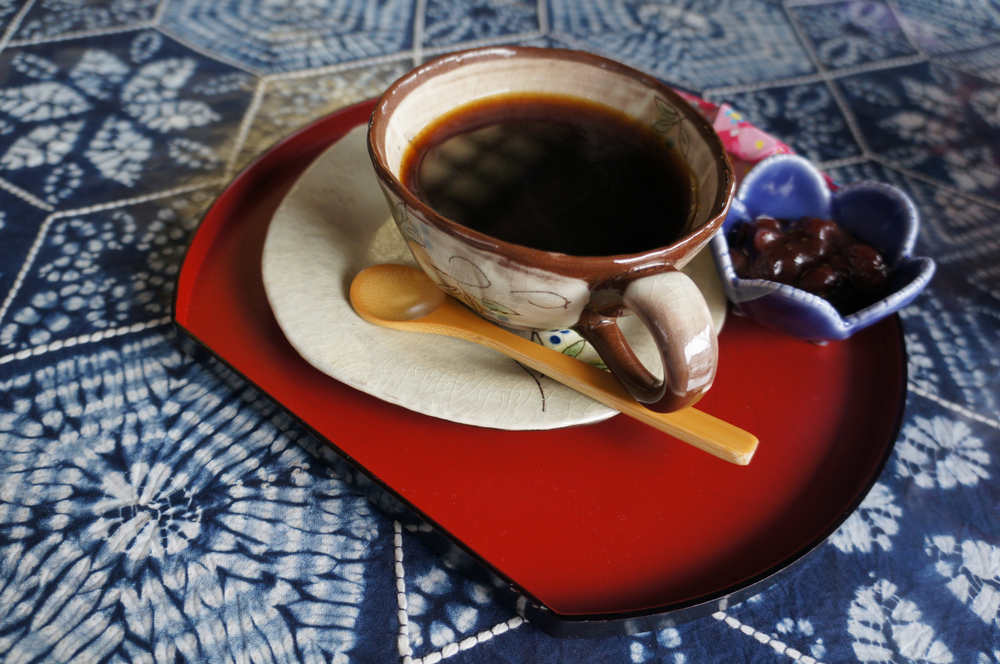 Industries
Industries
A Look at the Lucrative Japanese Coffee Market
By Priyanka Rana

Coffee is one of those universal staples that keeps us feeling alert and ready to face the day. But how do Japanese consumers relate to coffee and how has the popular beverage become a core part of their everyday lives? Here, we explore the Japanese coffee market, related innovations, major players, and where there are opportunities to tap into the market.
The Japanese Coffee Market: An Overview
Between 2021-2025, the global coffee market is expected to grow at an annual rate of 7.6% to a size of $144.68 billion. Behind the United States and Germany, Japan ranks as the third-highest consumer of coffee in the world by total weight, consuming around 7.5 million bags (each 60lbs) in 2019. Furthermore, the overall Japanese coffee market was worth $38 billion USD in 2021, with per capita consumption at 2.07kg. It is estimated that the sector will see growth of 8.63% year-on-year between 2022-2025.
So how exactly does Japan fit into the coffee market as a whole?
If you’ve visited Japan, you may know that the local Starbucks releases culturally relevant limited-time beverages and snacks tailored to Japanese tastes and interests. The big chains like Excelsior Café, Doutor and Tully’s are also known for releasing appealing new line-ups on a regular basis.
Coffee filtering has long been central within the Japanese coffee scene and for many, the method of brewing from bean to cup has become its very own form of artistic expression. Latte art connoisseurs and independent coffee shops are also common, particularly in more unique shopping areas like Tokyo’s Shimokitazawa. As the means of coffee brewing has filtered through Japanese life, it has yielded a variety of roasting strategies, careful bean selection, and brewing technologies, all performed with the careful attention to detail the Japanese are so widely known for.
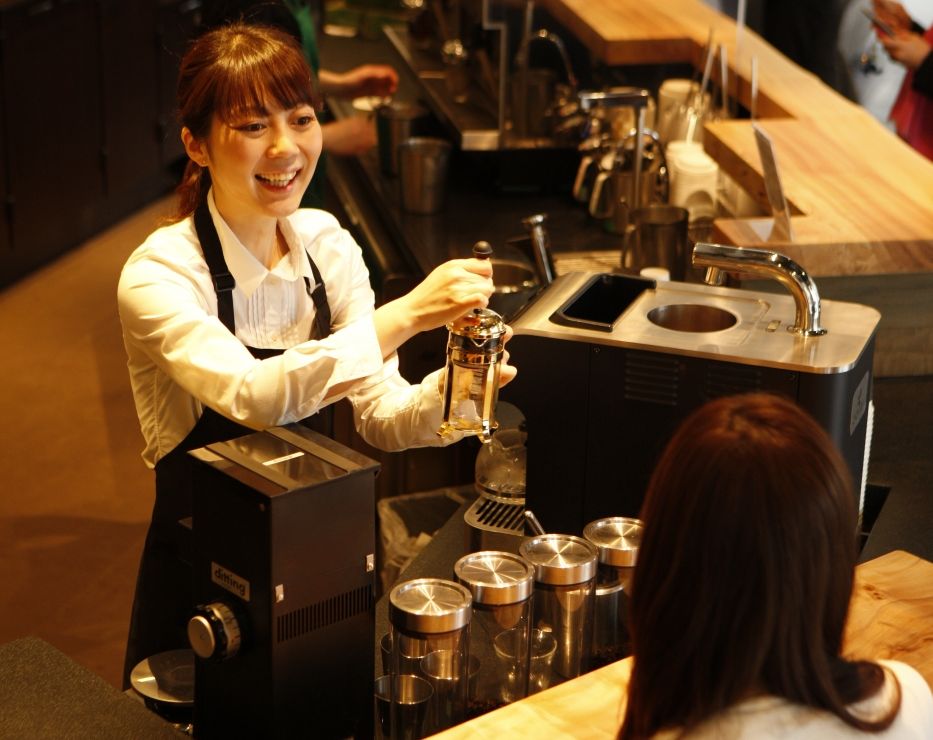
First arriving via Dutch and Portuguese vessels in the seventeenth century, coffee has had its own remarkable Japanese evolution, both in terms of flavour and capacity. The term for coffee in Japanese, kouhii (コーヒー), stems from the Dutch word koffie, and as a result of this being a loan word, the katakana alphabet is utilised. Similarly to the beverage itself, coffee has taken on its own Japanese structure and also has its own kanji characters (珈琲) moving away from the original Dutch word.
Coffee’s migration to Japan was progressed by its use as a therapeutic drink close to places foreigners had settled. It was also used as an energiser by prostitutes working in seventeenth century Nagasaki. It became popular when Japan opened its borders in the 1860s, as mixed coffee and sugar balls – known as kouhiito, were added to hot water, making a simple form of instant coffee.
Japan’s first coffee house was named Kahiichakan, launched by Tsurukichi Nishimura in 1888. The primary goal was to give back to the younger generation by opening a cafe, creating a space to share knowledge. It would also act as a social venue where ordinary people, students and youth could come together and enjoy themselves.
The two-storey western style house offered good value coffee with access to newspapers, cowhide seats, pool tables, work areas, stationary, showers and even rooms where benefactors could have a nap. Kahiichakan marked the beginning of an ongoing relationship in Japan between smoking tobacco and drinking coffee. Even in the 1930s, Tokyo was home to more than 10,000 coffee houses.
Today, Japan ranks as the fifth biggest importer of coffee and coffee products, and the second largest coffee market in the world. It has been going head-to-head with the nation’s most revered drink—tea. Bistros and chain coffee stores such as Starbucks offer convenient spaces for the cutting edge relentless society where busy mothers can take a break with their babies, salarymen can comfortably work outside the office, and youngsters can go to meet their friends, functioning as a rare sanctuary between the household and the workplace.
In any case, even among the rise of big name brands like Starbucks, the Japanese coffee shop (kissaten) has held its popularity, giving rise to a kind of renaissance for individuals who are eager to pay a premium for quality coffee backed by traditional values.
Major Companies in the Japanese Coffee Scene
The best Japanese coffee shops import beans from coffee-growing nations around the globe such as Guatemala; Rwanda; Kenya; Indonesia and Thailand. Beans are roasted and ground on site in small batches. Aeropress, French press, and paper trickle (pour over) are some of the common coffee filtering methods in Japan.
The concept of drinking coffee as a chilled beverage is said to have begun in Japan in the 1600s. Furthermore, if there’s one particular place you can buy every type of distinctive coffee from vending machines – including iced coffee, black coffee, or bistro lattes – it’s Japan. Bistro culture developed from table service-style coffee shops to incorporate counter assistance style shops like Doutor during the 1970s. In 1996, the first Starbucks opened in Japan. Starbucks is unquestionably well known among Japanese consumers, yet there are numerous coffee chains to choose from. Indeed, these days coffee is cherished in a variety of styles.
Tully’s Coffee
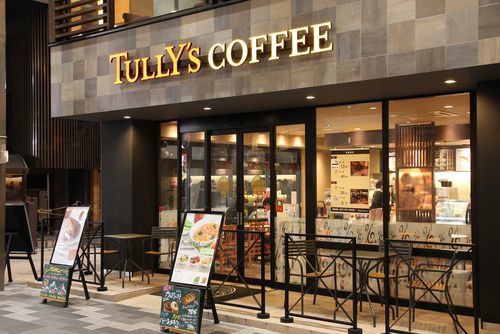
Like Starbucks, Tully’s Coffee is an imported franchise, owned by American parent company Barista’s Coffee Company Inc. headquartered in Seattle. It has been present in Japan since 1997 when the first local branch opened in the fashionable Ginza district of Tokyo. Tully’s entered the Japanese market after an employee at Sanwa Bank made a personal request to the company’s Founder, Tom “Tully” O’Keefe, asking him to expand the business into Japan. Now, it’s one of the most successful coffee chains in Japan aside from Starbucks.
As of 2006, Tully’s Coffee Japan has been managed independently through a licensing agreement with major beverage manufacturer Ito-en. Now, there are more than 700 stores across Japan. As is a common promotional tactic, Tully’s often rotates its limited-time offerings to maximise consumer appeal, especially as the seasons change. Their official slogan is ‘Taste the Difference’.
Doutor Coffee
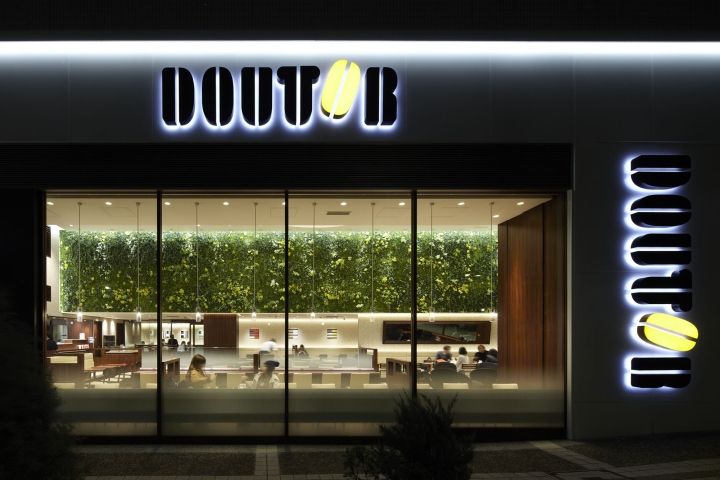
The Japanese coffee chain that has been driving the local bistro culture since the 1970s is Doutor, which now has more than 1,000 stores across Japan. Doutor is a counter service-style bistro, where customers can purchase a cup of coffee at a low cost of 224 JPY. Service is quick, and there are additional takeout options. Another extraordinary thing is that, as a result of having so many stores, whenever you want to take a break, you can practically pop into one no matter where you are.
Despite being cheap, this doesn’t compromise on the quality of coffee customers can enjoy. At Doutor, coffees have an aromatic fragrance and profound flavor, which is generated by conduction broiling. To go with the coffee, people regularly order a delicious German-style hot dog, which has become so famous among Japanese that it’s practically ‘Doutor”s flagship dish.
Ueshima Coffee House
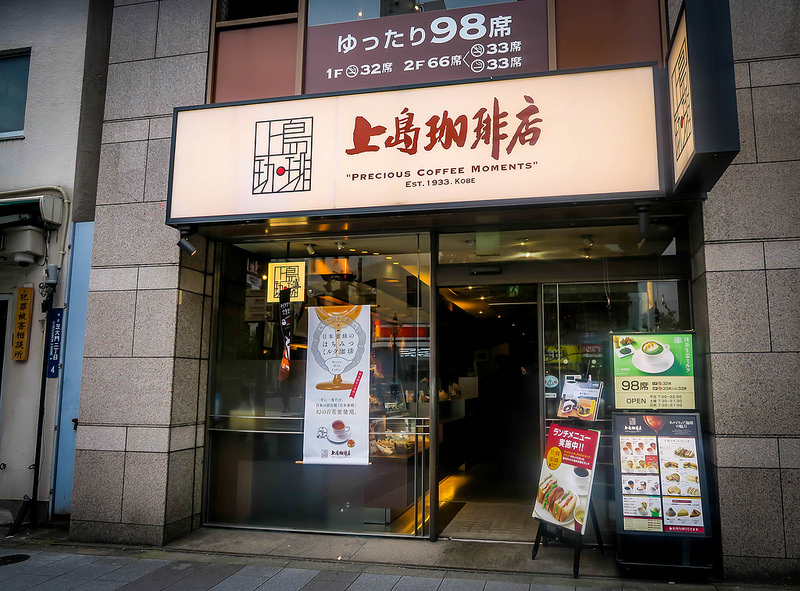
Ueshima Coffee House is a coffee chain comprising more than 100 stores across Japan, run by UCC Coffee, a food and drink maker with a considerable authority on coffee. Wooden furnishings lend a warm feeling to these cafes, where customers can appreciate coffee via counter service with a relaxing atmosphere. Ueshima Coffee House’s flannel drip coffee has a smooth aroma and full-bodied flavour, and is amazingly smooth to drink.
Customers can relish a variety of coffee styles here, with the top suggestion being Brown Sugar Milk Coffee (410 JPY). This incorporates a fusion of milk and sweet earth-coloured sugar, and the iced variant is immensely popular as well. Anyone seeking something extremely Japanese could try any of Ueshima Coffee House’s sesame-enhanced Japanese coffee desserts.
Komeda’s Coffee
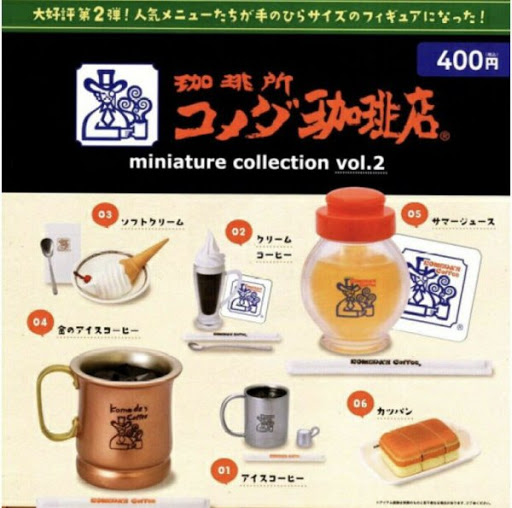
Nagoya is one of the areas of Japan known for its especially remarkable coffee culture. A morning coffee order comes with a variety of other tasty items. For instance, Komeda’s Coffee is a coffee chain first launched in Nagoya, and now has more than 900 stores throughout Japan. In addition to their coffee and snacks, Komeda’s Coffee has gained such a following that they also sell collectable miniature versions of their dishes, which can sell at impressive prices.
Komeda’s Morning Service (offered until 11:00am) incorporates a complimentary extra: for the cost of one beverage, customers also get a slice of thick toast and a choice of either a hard-boiled egg, plate of mixed greens and egg, or ogura-an (sweet bean paste). Other popular items on Komeda’s Coffee menu are the Shiro-Noir, a hot danish pastry finished off with cool soft-serve frozen yoghurt (670 – 740 JPY), and their wide array of sandwiches.
Hoshino Coffee
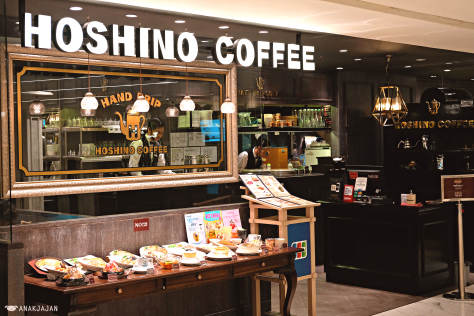
Hoshino Coffee is a Japanese coffee chain with all the charm and appeal of an old fashioned Japanese cafe. There are currently more than 280 stores across Japan. Hoshino allows customers to experience hand-poured drip coffees produced using freshly ground beans, roasted by conduction, with three distinctive mixed coffees that contrast in terms of taste and mix.
The Speciality Souffle Pancakes are one of Hoshino Coffee’s most popular dishes. Particularly popular in Japan, the delicate, cushy surface of this dessert makes for a great counterpart to coffee. Although the pancakes take time to prepare, generally customers wind up returning for more. Beside the souffle pancakes, there is a full arrangement of other types of foods, including pastries.
Cafe Renoir
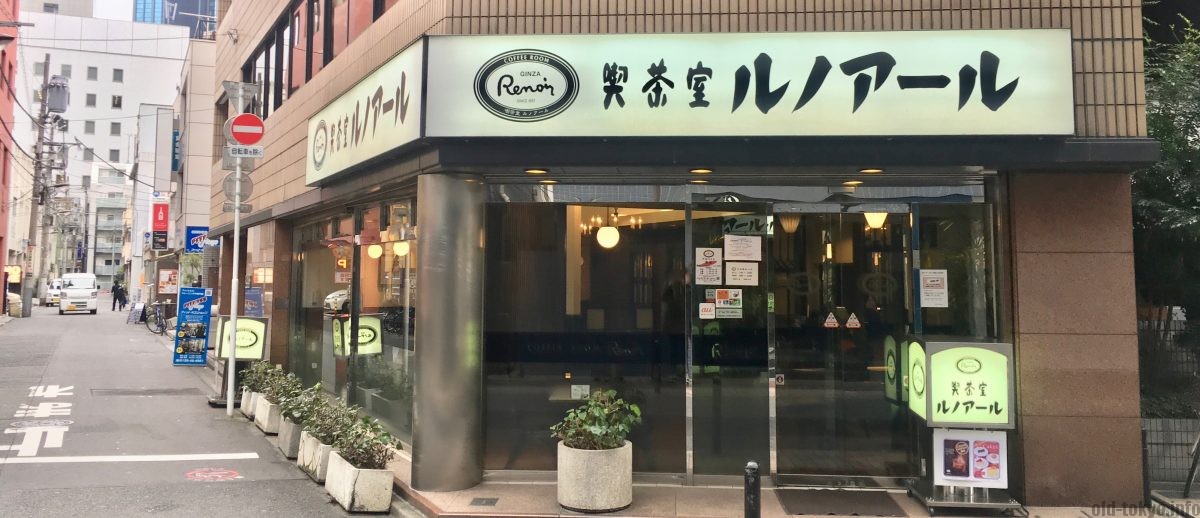
Cafe Renoir is a coffee chain with a retro, Taisho Era (1912 – 1926) feel that has in excess of 110 stores concentrated in Tokyo and Kanagawa. Its primary selling point is the profound, smooth taste of its flannel drip coffee. The costs are somewhat higher when contrasted with other coffee chains, however this chain offers table service with open seating, so Japanese individuals come to Renoir to relax and feel comfortable. While maintaining this relaxed, retro atmosphere, it has also begun offering takeout options, which are growing in popularity in Japan
Starbucks
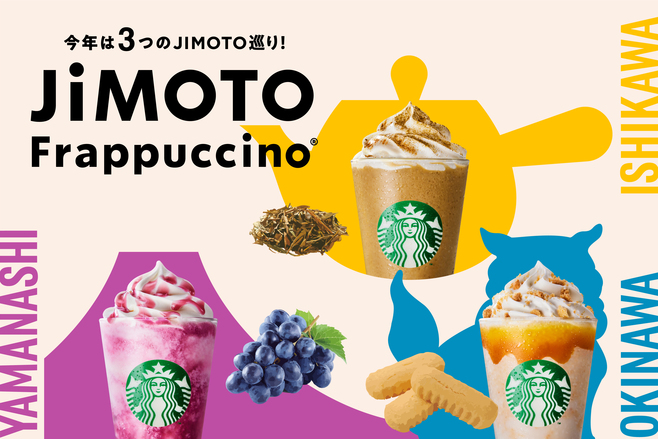
Starbucks has a relatively long history in Japan, with its first branch opening in Tokyo’s Ginza district in 1996. It has since become a wildly popular choice especially among younger Japanese citizens, changing the face of the coffee industry in Japan, and has maintained buzz and popularity partially through the steady release of seasonal products. These have included spring-themed cherry blossom and strawberry flavoured drinks; and autumn-themed “daigakuimo” (a snack made from fried sweet potato and molasses) flavoured drinks. It also ran a successful campaign of locale-exclusive drinks – its “47 JIMOTO フラペチーノ” (meaning 47 hometown frappuccino) campaign – which are flavoured to reflect the famous local produce of each of Japan’s 47 prefectures.
The sense of urgency created by these limited-edition products helps to drive consumers to post about their visits on social media websites such as Instagram and Line – both of which maintain very high popularity in Japan – helping to spread the word organically. Consistently backed by social media buzz and with over 1,550 stores across the country, Starbucks has long proved its immense staying power in the Japanese market.
Ready-to-drink Canned Coffee in Japan

Japanese canned coffee brands initially came into existence in the 1960s and were quickly seen as a convenient way to kick-start the day, along with the development and expansion of convenience stores and vending machines.
Soon, canned coffee began to spread out into different parts of the world and became particularly mainstream across Asia. A distinctive aspect about canned coffees in Japan is that vending machines can be found in enormous numbers and everywhere within a city, not necessarily in the vicinity of a shop or station. This even extends into more rural areas. For this reason, canned coffees are equally as ubiquitous as Japan’s vast array of soft drinks, which have a notoriously fast turnaround rate in terms of new product developments. This is exemplified in how soft drinks company Dydo Drinco released 8 new soft drink products into the Japanese market just between March and June of 2022, .
The first mass-produced Japanese canned coffee product was launched in 1969, and since then, UCC Ueshima Coffee Co.,Ltd. alongside many other Japanese coffee brands have thought of more effective approaches to improve their product range, regardless of whether that be adding milk and flavourings or introducing ready-to-drink hot versions in vending machines. UCC Coffee is considered to be one of the pioneers of canned coffee, a company which, since 1965, has claimed the Guinness World Record title for ‘Longest-Selling Ready-to-Drink Canned Coffee Brand’.
Thanks to new innovations and promotional tactics, the Japanese canned coffee market has now grown to become an industry worth $6.1 billion in 2020 (falling slightly due to the effects of the COVID-19 pandemic and customers moving to at-home consumption), with several Japanese coffee and international coffee brands leading the charge. The number of vending machines in Japan has steadily declined over the past 8 years, falling roughly 1.1 million to approximately 4 million – around 2.5 million of which were beverage vending machines, in which canned coffee remains an absolute staple item.
BOSS Canned Coffee
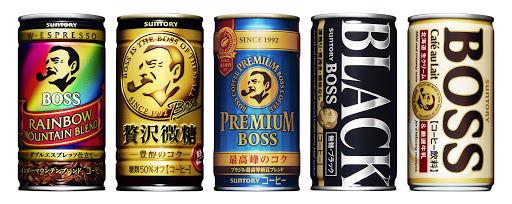
Since its launch in 1992, Suntory’s BOSS Coffee has been a leading market favourite among Japanese canned coffee brands, revered by a wide range of consumers, skewing primarily towards male demographics. In FY 2018-2019, it ranked as Japan’s third largest beverage brand (across all types of beverages), and has sold over 100 million cases for four consecutive years from 2018. BOSS Coffee is a can filled with aromatic, strong milky coffee with a mild sweetness that is enough to keep one awake for the rest of the day.
‘Pride of BOSS’ uses a coffee blend from BAU farm in Brazil. Ready to drink and available in a wide-range of varieties and styles, BOSS Coffee has something for every coffee drinker, whether they’re seeking a coffee that is black and unsweetened, or one that is milder with added milk and sugar.
Suntory’s Craft BOSS ready-to-drink coffees, which were launched in 2017 and sold in PET bottles, also helped to create new demand for ‘craft’ style coffees that are easily accessible. Now, there are several variants and packaging materials used, each with their own benefits.
Georgia Canned Coffee
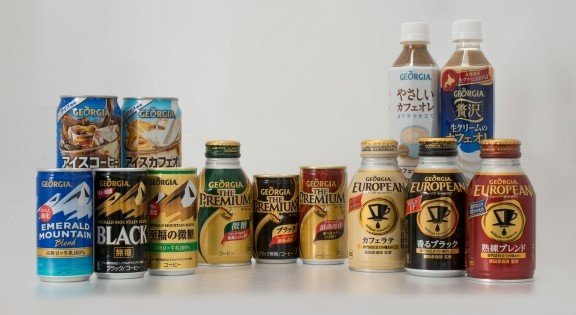
Sold by the Coca-Cola Company, Georgia is one of the most well known Japanese canned coffee brands, featuring around 30 varieties to choose from, including: original blend; mocha; latte; milk and many more. Georgia coffee was launched by Coca-Cola Japan in 1975 and has since overwhelmed the canned coffee industry in Japan. Of the 2.25 million beverage vending machines in Japan, 980,000 (approximately 40%) are owned by Coca Cola, and serve Georgia coffee.
Georgia has also expanded into other markets, for example; Singapore, South Korea, India, Bahrain and the US. Some of the most popular variations are Georgia Summer, Georgia Royal, and Emblem Black. Georgia Coffee is one of Coca-Cola Japan’s fastest-growing brands, and it is scraping the success of other competitive RTD coffees.
Costa Coffee
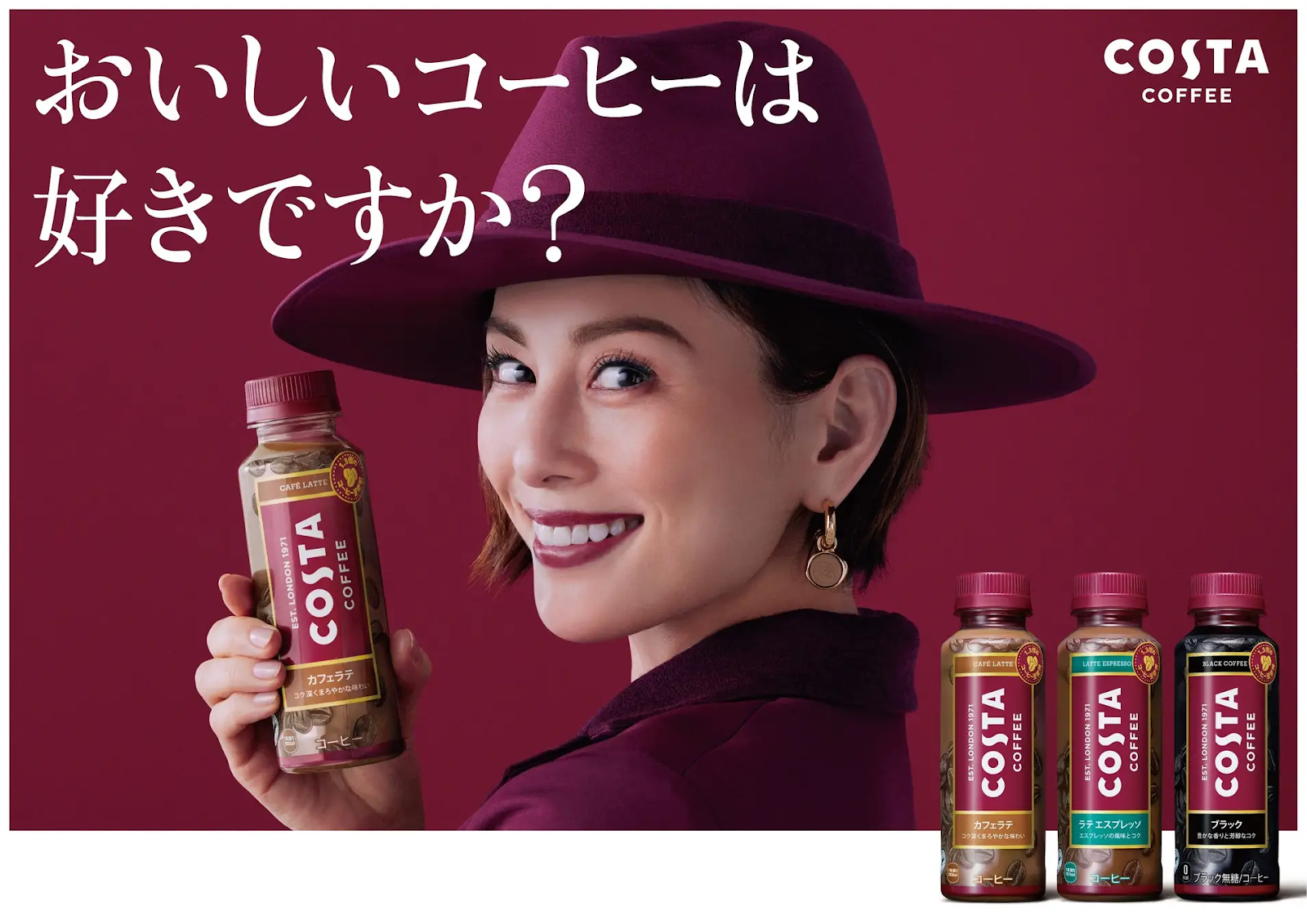
UK coffee chain Costa Coffee has been making moves to enter the coffee industry in Japan, opening a pop-up store in Tokyo’s Ginza loft in 2021. As of August 2022 this remains the only Costa Coffee shop in Japan, however it has massively expanded in other areas. There are over 180 “Costa Express” self-service machines across the country, and its ready-to-drink products can be found in vending machines and convenience stores. Like Georgia, Costa Coffee has also been able to massively benefit from Coca-Cola’s ownership of so many of Japan’s vending machines due to its acquisition by the company in 2019, causing it to quickly gain popularity.
Furthermore, in order to effectively market the brand to a Japanese audience, they chose to collaborate with famous Japanese actress Ryoko Yonekura, producing commercials and hosting press events. They have also targeted young Japanese consumers by working with actor Hayato Isomura, who has starred in various live-action dramas popular among the younger generation such as “Kamen Rider” and “Tokyo Revengers”.
Drip Coffee in Japan
In Japan, instant drip coffee is also a popular alternative to cafe, takeaway or ready-to-drink options. One of its primary selling points is that its aroma hits the consumer three times during the process of making a cup of coffee: first when the package is opened; secondly when the coffee is being prepared and finally while drinking it.
The special blend drip coffee from Key Coffee – one of Japan’s most popular drip coffee brands – comes individually wrapped and offers a refined taste. Like many other brands, this premium quality coffee is made using coffee beans imported from Colombia and Brazil. It is designed to be easy to make, not requiring the use of a machine. Their “variety pack” offers six blends of drip coffee, allowing consumers to test different flavours and develop their own preferences for just over $5.
Blendy is another Japanese drip coffee brand which provides easy-to-prepare coffee. Similar to Key Coffee’s products, the beans are sourced from Colombia and Brazil, and particular attention is given to ease of use. The drip filter has flaps that attach to the sides of coffee mugs, keeping it balanced and in position. These drip packs are made by roasting the coffee beans via the company’s proprietary roasting technology, which aims to give the coffee a rich aroma and clear taste. Beyond drip coffee, Blendy also has an extensive and popular range of instant coffees, teas and other drinks. Included in this is a new “nut latte” product launched in 2021, following the growing wave of veganism in Japan.
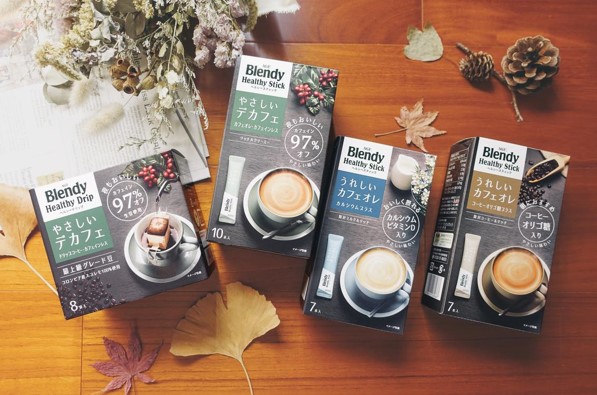
Thinking of Tapping into the Japanese Coffee Market?
The Japanese coffee market is indeed competitive, but there is also strong demand for new and innovative coffee products. With major players like UCC, Coca-Cola and Suntory dominating the market, penetration could certainly pose a challenge.
That said, the success of American brands like Starbucks and Tully’s points to the ability of non-Japanese players to gain a strong foothold among Japanese consumers. Any foreign brands must consider their strategy carefully and conduct thorough research prior to entering Japan, considering how you can make your products appealing and relevant by aligning with cultural values and sensibilities. We at Tokyoesque can do this thinking for you. To plan your business’s penetration into or further development in the Japanese coffee market, get in touch with us to arrange a free 30 minute consultation.
Related: Rising Success in the Japan Bakery Market
Keep checking back or follow us on LinkedIn, Facebook or Twitter to get notified about our latest posts. We’ll be adding more articles on IoT development in Japan, so watch this space if this is an industry you’re interested in!
Alternatively, feel free to get in touch and see how we can help you develop your coffee or beverage brand in the Japanese market.
